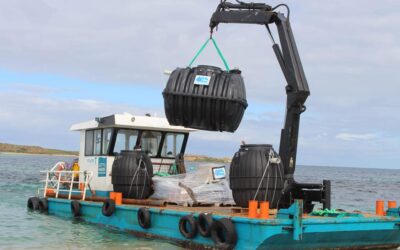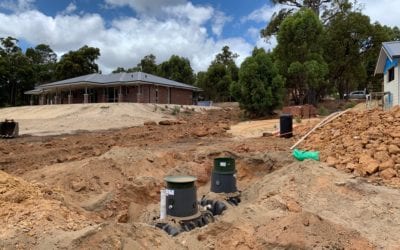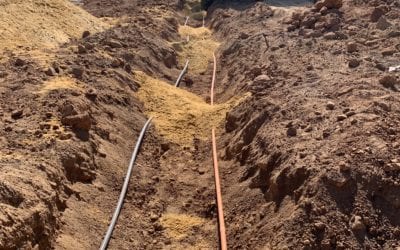WA’s Leading Septic Tanks Experts
OUR SEPTIC TANK SERVICES
INSPECTION
There are a number of reasons to get a septic tank inspection done.
Buying or moving properties?
Something doesn’t smell, right?
The lawn grows extremely well over the septic tank?
We can help with that! Get in touch today.
When your septic system and septic tank are working properly you don’t really think much about them. However, the moment that they are not working properly, it becomes a huge problem very quickly. If everything is working properly, you should not have any smells coming from the plumbing or around where the tanks are located. However, if you can smell sewage, you need to call for an inspection right away. If the smell is inside your home you should leave the premises immediately, this is biohazardous and can be detrimental to your health. You should always have your septic system inspected, this will ensure that it is running properly. However, how often the inspection should take place should be determined by the professionals. Some septic systems need regular maintenance, while other systems can be looked at once a year.
The septic system is designed to take on the wastewater of the home. These work by separating the solids and water of the waste. The water is called effluent and will exit the tank into the drain field where it will be further cleaned naturally by bacteria. The solid waste will remain in the tank to be broken down by bacteria into effluent as much as possible. However, there will always be some remaining sludge. This sludge can build up and will eventually need to be pumped. Having your septic system checked will allow you to prepare for this needed service.
Ensure your Septic System is working properly
During an inspection, the drain lines and distribution box will be inspected to ensure that they are all working as they should. The baffles of the septic system will need to be checked as well. These are used to slow the release of the liquid sludge to ensure there is a good and steady flow. If when checked there is evidence of solids on the baffles this means that the septic system is in need of being pumped or it will fail. Other things that are looked for are the erosion from chemicals, evidence of an overflow and the sewage level. The sludge needs to be 1/3 of the tanks in order for the system to be able to work properly. Typically a septic system can go about 4 to 5 years if it is sized right before needing to be pumped out.
INSTALLATION
MAINTENANCE
The maintenance of your septic system is quite easy for the most part. Have it inspected regularly, based on the recommendation of the manufacturer of your system. If you don’t know the recommendation, give us a call and we can take a look for you. Keeping up with the maintenance will ensure that your system is working as it should. If you are looking at purchasing a home, you should always have the septic systems inspected first. This will allow you to know what type of system it is, how big it is and what condition it is in.
Some things that you need to know when you have a septic system are:
- Don’t use anything other than toilet paper.
- Avoid putting household cleaners down your system.
- You should landscape around the top if exposed to keep it easy to access.
- Do not park cars on top of the septic tank to avoid harming it.
Pump Out Service
Once your septic tank is inspected it might be determined that it is too full to work properly. Not a problem. A septic tank pump-out is the perfect solution. A large truck with a suction device onboard that will suck all solids out of the tank. To do this, however, you will need access to the tank’s lid, which can be a bit of a challenge if the homeowner doesn’t know where that is. There are ways for us to determine this for you. Just give us a call and we will be happy to assist in any way we can.
If you want to attempt to find it on your own, then there are places to start. You can check with your county clerk’s office, as typically these things are recorded there. Check the sewer lines that are exiting the home, they give a good idea in what direction to look for it. Then with a pipe, probe the ground and try finding it that way. Typically the tank is under a nice patch of grass, as grass over them grows very well. This is also a great place to start. However, we can help you find it and inspect it for you as well.
FREQUENTLY ASKED QUESTIONS
What is a Septic Tank?
There are different types of septic tanks. Your local shire will determine which Septic Tank is best for your area. Please feel free to give us a call and we can assist with that.
Here are the types of Septic Tank:
- Conventional System
- Chamber System
- Aerobic Treatment Unit
- Mound Systems
- Evapotranspiration system
- Recirculating Sand Filter System
- Cluster/Community System
- Constructed Wetland System
These all work in different ways. Give us a call and we can discuss with you which are best for your particular situation. Some of the factors we consider when choosing the best septic system for your property.
- The size of your block and space available.
- Is there room for a drain field and best situation for effective as possible?
- How many people will be actively using it?
- What type of dirt your home is sitting on?
All the factors will be taken into account to determine that the building is equipped with the proper septic tank.
A household septic tank usually consists of two round concrete tanks with lids placed close to each other. They are connected by a pipe. This type of septic tank is designed to be used by up to 10 people. Round tanks are constructed (built) at a factory and transported to the site (place) where they are to be used.
A septic tank can also be a single rectangular concrete tank with a dividing wall in it.
A rectangular septic tank is designed to be used by more than 10 people and is often used for sewage treatment at a lagoon. The tank is constructed on the site where it is to be used.
Septic tanks are always divided into two sections, the first being twice the size of the second. In round septic tanks, the separation into two tanks provides this division. In rectangular tanks the dividing wall provides the division. This wall will have a hole in it below the level of the sewage to allow effluent to pass from the first to the second section.
Round septic tanks have concrete bottoms and lids. Rectangular tanks usually have concrete bottoms and lids, but some may have metal lids. The lids can be lifted off for maintenance and will have IOs in them.
There are many regulations (rules) which require septic tanks to be constructed, positioned and installed in a particular way. These rules are controlled by local authorities.
It is very important to find out if the regulations are being followed by contractors or anyone else installing (putting in place) new septic tanks in the community. It is a good idea to contact the local Environmental Health Officer to check that the necessary approval has been given to construct and/or install the septic tank disposal system.
Problem signs in septic tanks to be aware of?
The septic tank will need to be checked if there are signs that it is not working properly.
Some signs that a septic tank is not working properly are:
The sewage in the toilet or the liquid waste from other fixtures flows away very slowly
Liquid waste overflows from the disconnector trap.
Wet areas are seen at the top of the septic tank.
There is a strong unpleasant smell near the septic tank.
The grass around the tank is very green and growing well.
In the case of on-site disposal systems, it is important to remember that some of these signs may indicate problems with the leach or French drain. Therefore, these drains will need to be checked at the same time as the septic tanks are checked.
If the septic tank and the leach or French drain need to be pumped out, both should be done at the same time.
What does it cost to install a septic tank?
Prices vary depending on a number of factors, please contact us today for your free no obligation quote.
How Does a septic tank work?
A septic tank must be filled with water before it is used. The water helps start the treatment of the sewage by the bacteria.
The sewage treatment by the bacteria turns the waste matter into effluent (wastewater) and a solid substance called sludge. The effluent gets carried to the leach drain, French drain or lagoon.
The material in the septic tank gets covered by a hard crust known as a scum blanket. This blanket acts as an air seal keeping air away from the sewage. The lack of air helps in the breakdown of the sewage by the bacteria.
The sludge gathers at the bottom of the tanks. Eventually there will be too much sludge in the tank and it must be pumped out and the sludge disposed of correctly.
By having two tanks or a rectangular tank divided into two sections, most of the sludge stays in the first tank or section. In the second tank or section, the sewage undergoes further treatment to remove solid matter.
The effluent is then piped to the effluent disposal system, such as the lagoon.
How often do you need to empty a septic tank?
The sludge gathers at the bottom of the tanks. Eventually there will be too much sludge in the tank and it must be pumped out and the sludge disposed of correctly.
We recommend pumping the primary tank out every 4-5 years
We offer a fast, fuss free septic tank pump out service for domestic and commercial customers.
recent projects
Penguin Island Aerobic Septic System Installation
Penguin Island Aerobic Septic System Installation
Aerobic Septic System installation Jarrahdale
Aerobic Septic System installation Jarrahdale Prestige Group WA specialises in Aerobic treatment unit installations, these are often called ATU's or aerobic septic systems. A customer in Jarrahdale requested a Prestige Group WA to install ATU's and dripper fields as...
Power and Water Service Trenching
Power and Water Service Trenching Jarrahdale Hills Prestige Group WA are professional trenching contractors offering a number of Earth Works including rock trenching, like this project we recently undertook for a client in need of some professional trenching services....
Testimonials

“Brad came out and completed some maintenance work for us. Very professional and competitive price and realisable. Will will be getting them back again!” Simone Thurkle

“Brad and his team did an excellent job in replacing the leach drains. He was very quick in identifying the problem and provided a proactive and cost effective solution.” Lize de Jager



